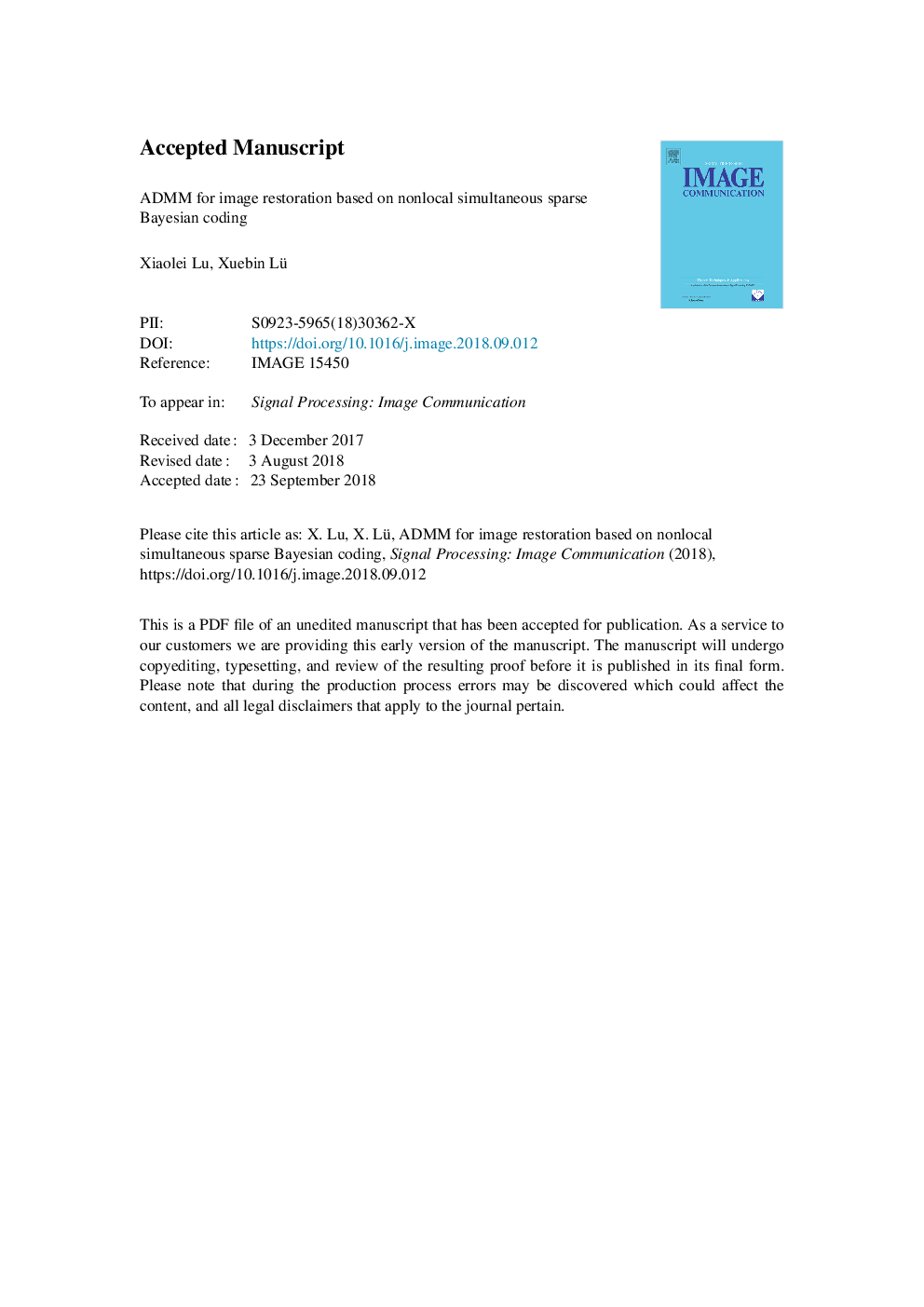| Article ID | Journal | Published Year | Pages | File Type |
|---|---|---|---|---|
| 11028050 | Signal Processing: Image Communication | 2019 | 32 Pages |
Abstract
Group-based sparse representation (GSR) models of natural images decompose each patch in group as a sparse linear combination from an over-complete dictionary and assume the sparse coefficients of each patch have a common set of nonzero support. Although the GSR models have shown great success in image restoration (IR) applications, however, current models are simple extension of traditional L0 or L1 sparse models and lack spatial adaption and principled fashion. In this paper, we propose a novel GSR model calling simultaneous sparse Bayesian coding (SSBC) model. In this model, the shared scaling variables in patch group are first learned by the empirical Bayesian strategy. Based on the learned scaling variables, the sparse coefficients can be efficiently solved by the posterior means of the coefficients. We further generalize this model to process general IR tasks with the alternating direction method of multipliers (ADMM) techniques. Extensive experiments on image denoising, inpainting, deblurring and single image super-resolution demonstrate that the proposed method achieves notable objective and subjective improvements over many state-of-the-art restored methods.
Related Topics
Physical Sciences and Engineering
Computer Science
Computer Vision and Pattern Recognition
Authors
Xiaolei Lu, Xuebin Lü,
